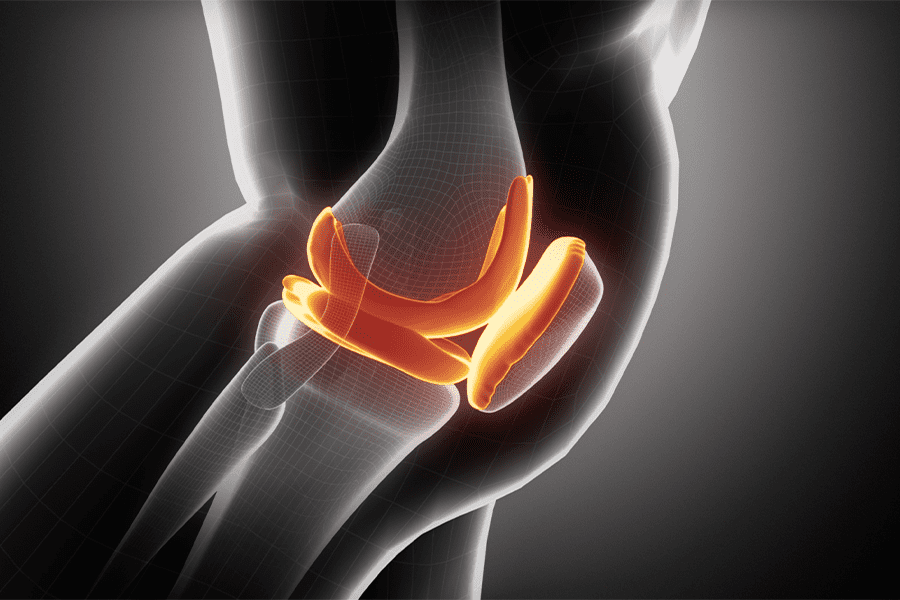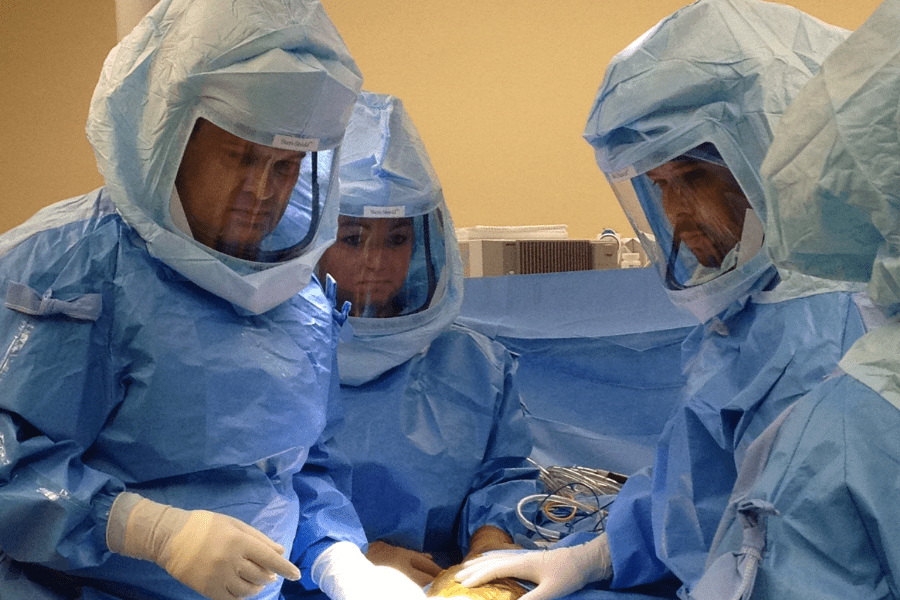Why Lateral Approach Total Knee Replacement Might Be a Better Choice? Michelle’s Patient Story
- Why would I need a lateral approach total knee replacement?
- What happens during lateral approach total knee replacement surgery?
- Why is lateral approach total knee replacement surgery potentially better than other procedures?
- What is recovery like after lateral approach total knee replacement surgery?
Like many knee replacement patients, Michelle struggled to come to terms with her decreasing mobility. She says, “Before the surgery, the main issue I had with my knee was that I couldn’t do a full extension.” Her physical therapists suggested knee replacement surgery and recommended a less-invasive procedure known as lateral approach knee replacement.
After looking into the procedure herself, Michelle decided to undergo treatment.
Eric G. Bonenberger, M.D., board-certified orthopaedic surgeon at the Orlando Orthopaedic Center, performed Michelle’s lateral knee replacement surgery. Michelle says, “Not only is Dr. Bonenberger a fabulous surgeon but I really think his bedside manner is so supportive.”
What was it like for Michelle to undergo lateral approach total knee replacement surgery? Why is this type of knee replacement surgery better than more traditional approaches?
We have answers that will help inform your decision to undergo surgery and can tell you more about the recovery process.
Why Would I Need a Knee Replacement?
 Knee replacement surgery is a procedure that relieves joint pain and stiffness by removing an arthritic joint and replacing it with a human-made prosthetic. The most common reason for having this surgery is to restore mobility and alleviate pain.
Knee replacement surgery is a procedure that relieves joint pain and stiffness by removing an arthritic joint and replacing it with a human-made prosthetic. The most common reason for having this surgery is to restore mobility and alleviate pain.
Patients with severely arthritic or damaged joints experience nearly constant pain, making it challenging to move and perform daily tasks. For some, the pain is so unbearable that it affects them even when they’re at rest and no amount of medication or physical therapy can relieve it. Osteoarthritis causes wear and eventual loss of normal articular cartilage. When patients reach this stage, doctors often recommend knee replacement surgery as an effective solution to their discomfort.
Most patients who struggle with knee-related issues experience pain, stiffness, and even suffer disability for years before seeking help. By replacing the damaged knee with a working joint, knee replacement surgery allows these patients to regain mobility and live a full life.
Michelle has this advice for people struggling with knee and joint pain: “Once you find yourself missing out—do it.” The limitations that come with knee pain are often debilitating and can prevent patients from leaving their homes to spend time with friends or family. Even small tasks like climbing stairs become excruciating ordeals, making it hard to live a normal life.
What Happens During Knee Replacement Surgery?
During knee replacement surgery, a surgeon will:
 Remove the damaged knee joint
Remove the damaged knee joint - Resurface the bone ends with metal and plastic.
- Cap the ends of the connecting thigh and leg bones with a metal and plastic replacement knee
Our knees take a beating in the course of our lives and it’s hard to understate how much we rely on them for everyday tasks. Knee replacement surgery, also known as total knee or knee arthroplasty, can be a lifesaver for patients whose joints have been damaged by arthritis, overuse, or injury. Arthritis is a common condition among aging patients and attacks the cartilage and bones in our knee joints. The weakened joint is extremely uncomfortable and can cause severe pain, stiffness, and mobility problems.
Michelle had the typical experience of most knee replacement patients. Before undergoing surgery, her pain steadily worsened and she found that the loss of mobility limited her ability to function. She says her bad knee even “affected [her] ability to get up from a chair.” Michelle also says her bad knee started affecting the rest of her body: “When I walked, I was walking with my knee sort of bent all the time, which then made the sides of my leg hurt, my calf, my ankle…”
The goal of knee replacement surgery is to remove and replace the damaged knee joint to alleviate pain and restore function to the entire body.
First developed in the early 1970s, knee surgery has evolved over the past 50 years, becoming less invasive over time. Less invasive surgeries mean shorter recovery times and a faster return to normal activities for patients. Lateral approach total knee replacement surgery is the latest development in knee replacement procedures and offers a potential alternative to traditional total knee replacement surgery.
Why Is Lateral Approach Total Knee Replacement Surgery Better Than Other Procedures?
A lateral approach total knee replacement is a minimally invasive orthopaedic surgery that may carry potential benefits for patients:
 Faster recovery
Faster recovery - Smaller incisions
- Less pain
- Less blood loss
- Smaller scars
During a lateral approach knee replacement, surgeons access the joint from the side of the knee, carefully working around the existing muscle structures to avoid damaging the surrounding tissues. Unlike traditional surgery, the quadricep tendon and muscle are preserved and quadricep tendon repair is not required.
In traditional total knee replacement surgery, the doctors make a large incision in the knee and split the quadriceps tendon that connects the thigh muscle to the kneecap. The doctor then proceeds to open the knee and replace the joint. Repairing the quadricep tendon does work well but may add to the patient’s recovery time. Dr. Bonenberger has found that the lateral approach “spares” the quadricep tendon. Therefore, tendon repair is not needed.
Michelle was sold on the potential benefits of the lateral approach total knee replacement. She recalls exactly what the physical therapist told her: “The incision size is smaller, you’re able to be up and about and we could do quad strengthening exercises right away.”
What Is the Recovery Like After a Lateral Approach Total Knee Replacement?
Michelle was astonished at how quickly she regained mobility in her leg. She says, “I will say that within a couple of days after surgery, I had full extension of the knee.”
Any major surgery comes with risk and a rehabilitation period, but with the lateral approach total knee replacement, patients often see a quicker return to a pain-free and more mobile lifestyle. During recovery, you will work with your surgical team and physical therapists to gradually increase your mobility, which will allow you to participate in more physical activities over time.
Michelle’s story is just one out of dozens of success stories from our surgical team.
At Orlando Orthopaedic Center, our doctors are standing by to help you get back on your feet. If you are struggling with pain and knee mobility issues, contact one of our team members or give us a call at (407) 254-2500.


